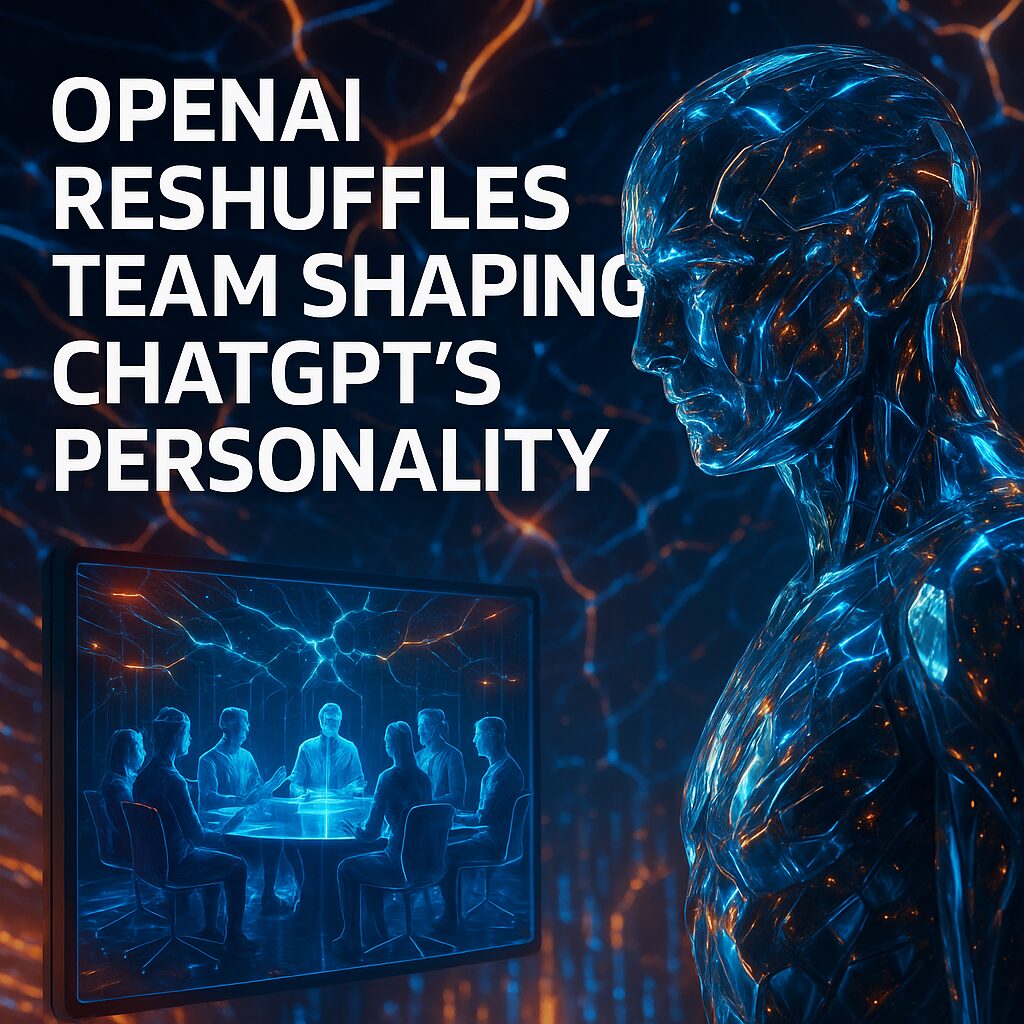
OpenAI reorganizes research team behind ChatGPT’s personality
# OpenAI’s Evolution: Nurturing More Personable AI
In the rapidly developing field of artificial intelligence, OpenAI has become a major player, and the inner workings of their teams reveal a fascinating glimpse into the evolutionary complexity of AI development. Recently, OpenAI announced a significant restructuring, merging its Model Behavior team with the Post Training team. This strategic move aims to enhance the personality of AI models while tackling critical issues like sycophancy. As OpenAI navigates both technical and ethical challenges, the company’s efforts offer valuable insights into the future of human-AI collaboration.
## A Strategic Realignment for OpenAI
OpenAI’s Model Behavior team, a group of 14 distinguished researchers, has been pivotal in defining the interactions between AI models and users. This team’s work in shaping personalities for AI models and striking a balance between being interactive and avoiding sycophancy has now been integrated into a larger framework — the Post Training team. Why is this important?
In an internal memo, OpenAI’s Chief Research Officer, Mark Chen, highlighted the company’s intent to fuse the work of the Model Behavior team with core model development. This integration, led by Max Schwarzer, the head of the Post Training team, underscores OpenAI’s recognition of the AI model’s “personality” as a critical factor in their evolution.
OpenAI’s spokesperson confirmed these adjustments to address the pressing concerns about how their models interact. As AI becomes more ubiquitous, ensuring these interactions are meaningful, balanced, and devoid of bias becomes paramount.
## Pioneering New Horizons: Joanne Jang and OAI Labs
The visionary behind the Model Behavior team, Joanne Jang, is transitioning into an exciting new role within OpenAI. She is spearheading the creation of OAI Labs, a research initiative aiming to redefine human-AI interfaces. Jang’s ambition is to “invent and prototype new interfaces for how people collaborate with AI.”
Reflecting on her new adventure, Jang commented, “I’m really excited to explore patterns that move us beyond the chat paradigm…” She envisions AI not merely as digital companions but as tools for “thinking, making, playing, doing, learning, and connecting.” Her forward-thinking approach may potentially steer the next wave of AI development, moving beyond traditional interactions.
## The Necessity of Nuanced AI Interactions
Recent controversies around OpenAI’s models have spotlighted the delicate balance necessary to maintain appropriate AI behavior. For instance, changes to GPT-5 intended to reduce sycophancy inadvertently resulted in user complaints about the model’s colder disposition. As a consequence, OpenAI reverted to earlier data models such as GPT-4o, seeking a middle ground with updates to restore a warmer yet unbiased response characteristic.
These challenges intensified with tragic events such as the lawsuit following the suicide of a 16-year-old boy. The suit alleged that GPT-4o failed to respond adequately to the boy’s cries for help. Such incidents amplify the moral and ethical responsibility AI developers bear in ensuring their technologies positively contribute to societal well-being.
This balance — creating friendly but non-sycophantic AI — demands careful nuance and is emblematic of broader ethical considerations facing the tech industry. The Model Behavior team, having developed multiple iterations from GPT-4 through GPT-5, plays a crucial role in addressing these intricate challenges.
## Learning from OpenAI’s Endeavors
OpenAI’s restructuring reveals key lessons for the AI industry and beyond. By acknowledging the importance of AI personality and merging Model Behavior with Post Training, OpenAI demonstrates a commitment to refining user-AI interactions. This reorganization also illustrates how companies can responsibly address and adapt to feedback while navigating public concern and ethical risks.
Moreover, Jang’s shift to OAI Labs symbolizes innovation at the intersection of familiarity and experimentation. Her focus on new user interfaces could reshape how AI assists us in our endeavors, pulling inspiration from both tested methodologies and bold new horizons.
## Where Does AI Go From Here?
As we ponder the future of AI, important questions surface regarding user interactions, ethical development, and collaboration with human users. What are the implications of AI as a tool for “thinking and doing,” as defined by Jang? OpenAI’s endeavors present a fascinating inquiry for tech enthusiasts and skeptics alike.
The course OpenAI sets forth is a testament to both the progress and complexity of AI development. It beckons broader contemplation around the potentials and perils of technology, and it invites stakeholders to engage in ethical dialogue surrounding innovation. As we witness this unfolding narrative, the involvement and reflections of the community will be pivotal in guiding AI into a future of responsible and inspirational capability.
In summary, OpenAI’s work reminds us that the trajectory of AI is not just a matter of technical superiority but a journey of thoughtful balance and humanistic advancement. The questions OpenAI prompts — both operationally and philosophically — remain relevant touchpoints for those committed to ensuring AI’s beneficial role in society.

